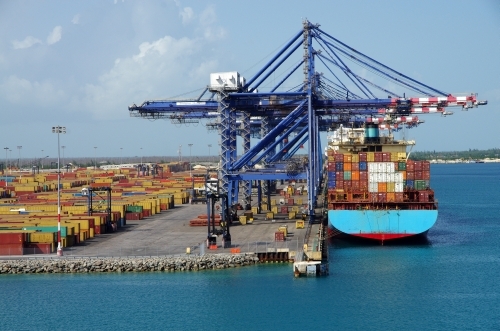What have the ports of Humbantota and Colombo in common? Separated by about 200 kilometres, these important ports of Sri Lanka are subject to deep restructuring works by Chinese companies. Investment exceeds $1 billion each. Both projects, scheduled for completion by mid-2013 and April 2014 respectively, are going to expand the ports and their rail connections. Such large-scale port infrastructure developments abroad reflect China’s policy to invest in maritime facilities from the East China Sea to the Arabian Gulf, at a pace that promises to affect the geopolitical balance in the Pacific and Indian Oceans. The US and India are watching closely and increasingly nervously China’s engagement in ports abroad, also dubbed as “String of Pearls”.
China’s interest in collecting “pearls”

The “String of Pearls” concept was referred to for the first time in 2004 in an internal report sponsored by the US Department of Defence called the “Energy Futures in Asia”; the metaphor depicts “the rising geopolitical influence from the South China sea through the Strait of Malacca, across the Indian Ocean and the Arabian Gulf”. Each “pearl” corresponds to a port with a substantial Chinese investment. While the investment in maritime infrastructure helps China build strategic relationships with partner countries, it also secures China’s presence along sea lines of communication (SLOC) that mainly connect China to the Middle East, but also to Africa, Europe and Latin America. Observers identify Chinese “pearls” in Hainan Island (China), Vietnam, South China Sea, Thailand, Strait of Malacca, Burma, Bangladesh, Bay of Bengal, Sri Lanka and Pakistan. Beyond that, near to the “String of Pearls”, China also invested in ports in Africa, North America, Greece and Belgium. The Economist drew up a map recently, with some of these “pearls”.
Various reasons can be quoted for China’s maritime activities all over the Indian and Pacific Oceans, ranging from resources and commercial interests to diplomatic and finally security and military interests. China, highly dependent on natural resources from the Middle East and Africa, is a country vulnerable to supply disruptions caused by political instability in supplier countries or problems, such as piracy or blockades, in choke points such as the Persian Gulf, the Strait of Malacca, South China Sea or Taiwan Strait. Through a presence in ports in these strategic regions, China is securing its energy routes and, at the same time, expanding commercial and diplomatic relations with many countries. China’s economic and military rise has made it the key player in the Indian and Pacific Oceans. Particularly in this region China’s transformation to a global maritime power can be witnessed, making it capable of counterbalancing US interests in the Western Pacific and Indian aspirations in the Indian Ocean.
When China acts, someone reacts
The countries with the largest interest in the region have been reacting to China’s increasing clout. In the US there is the strong conviction that the Chinese People’s Liberation Army (PLA) is developing itself into a high-tech force, helped by high investment in domestic science and technology industry which can counterbalance the US maritime influence in the Pacific and Indian Oceans. That is one of the reasons why the US shifted 60% of their naval assets in the region and invested in new platforms for the Indian Ocean. In India, Chinese acquisitions of maritime facilities are seen as a direct effort to outweigh Indian aspirations in the region. India has already strengthened its military engagement in the Pacific Ocean, concerned by some border disputes with China, the presence of Chinese submarines and warships in the Ocean and the proximity between China and Pakistan. There have also been other regional disputes which will force China to deal carefully with this issue such as the maritime tensions with Japan in East China Sea as well as with Philippines, Vietnam, Taiwan, Brunei and Malaysia in South China Sea.
But China rejects the “String of Pearls” theory
However, the Chinese Government continues to deny the “String of Pearls” theory. In March 2013, a Chinese Senior Colonel described it as “totally groundless“. According to pro-Government statements, China is not seeking hegemony, military expansion or to encircle India but only to expand its commercial and energy interests. Despite that, Beijing is conscious of its vulnerability in the region and the importance of such strategic points, so the Chinese interest in deepening relations with countries which can be useful for its growth is not expected to decrease.








[…] to several (almost philosophical) questions: How free is the free movement of persons? What is the String of Pearls theory? What does population growth mean for sustainable […]
[…] Read more… […]